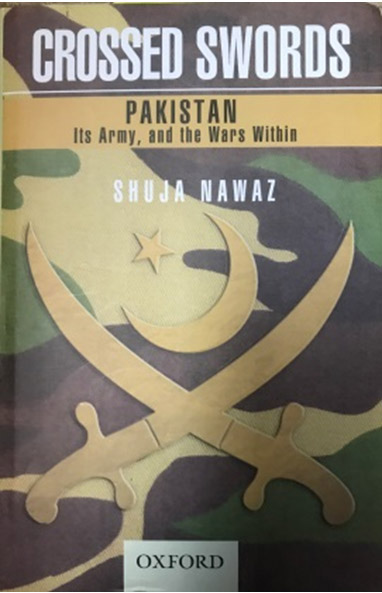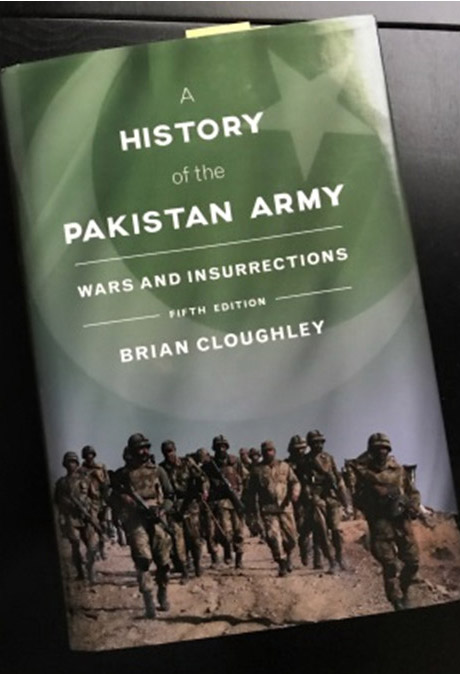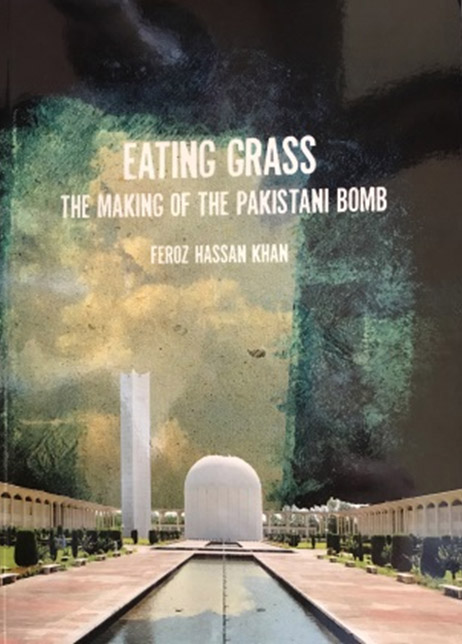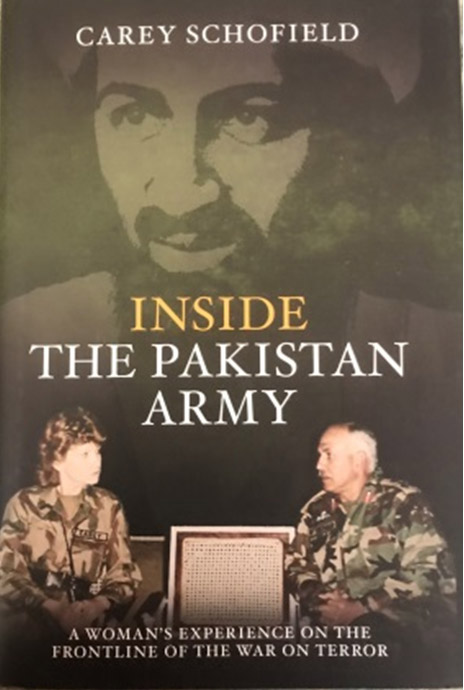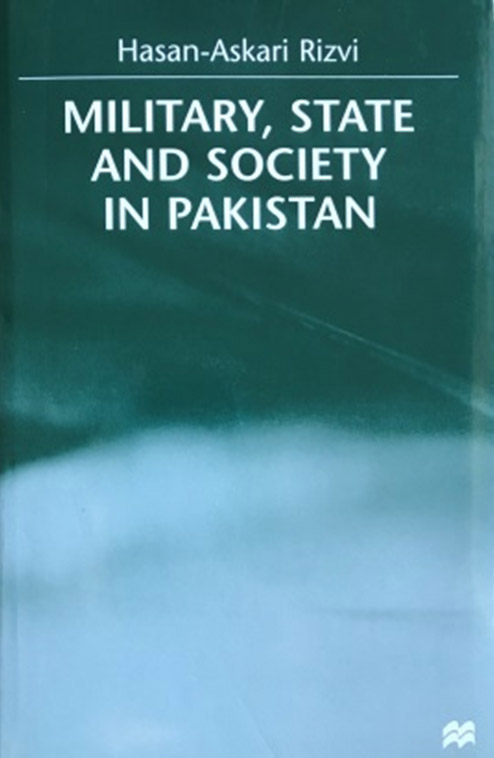
In prior columns, I addressed the issue of whether Pakistan won the war of 1965. When the discussion turns to the war of 1971, there is no doubt that Pakistan lost that war. However, many Pakistanis have absolved their military for the loss of East Pakistan in 1971, placing the blame instead on the squabbling politicians of West and East Pakistan.
As I did in the discussion of the 1965 war, I am going to cite from some experts whose objectivity about Pakistan’s capabilities is beyond reproach.
Shuja Nawaz, Crossed Swords: Pakistan: Its Army, and the Wars Within, Oxford University Press, 2008.
Contrary to popular belief, 1971 witnessed not one but three major conflicts in the subcontinent: one was a civil war within Pakistan. Another was a war with India… (and the third was) a Pakistani riposte from West Pakistan into Indian territory that began on 3 December 1971. (T)he result for Pakistan was abject failure, as the military regime blundered from a muddled campaign in the Eastern Wing to a fruitless adventure in the west. Lack of a clear and attainable goal for the war in the west reflected another failure of command and execution. … (Besides the HRC report, commissioned by President Bhutto) The Pakistan Army did commission its own review of the war… it was not distributed widely… The review was very critical and incisive… Unequivocally, the GHQ declared that ‘(T)he war on the West Pakistan borders was started much too late to influence the battle of East Pakistan. By 3 Dec(ember) 1971, (the) enemy had gained a firm foothold on the soil of East Pakistan, destroyed our air force in that sector and paralysed all communications in that wing… Had a more broad based policy formulation machinery existed, a timely and correct decision may have been taken which may have helped either to avert total disaster in East Pakistan or may have put us in a better bargaining position.’ … The gap between perception and reality is epitomized in General Yahya’s statement to the Hamoodur Rehman Commission and in his deposition to the Lahore High Court of 1978… (he) maintains firmly that India launched the attacks on the western front on 3 December, and that with ‘regard to the military defence of Pakistan, the strategy was framed with the proposition that fight shall take place with India on the borders of both wings. Our main aim was to continue fighting… A detailed analysis of the air, sea and land operations by the GHQ’s own team also lead to some broad conclusions that were devastating… Air support was deemed inadequate and delays in provision of ground support for the Pakistan Army did allow it to fight defensive battles.
‘Most of the formations have complained that it had taken 4 to 6 hours for their air requests to be met.’ The critique did not spare the army’s own operations… (The) lack of training of armour and infantry to fight as a cohesive team showed in almost all aspects… Commanders and staff at all levels in the army were unaware of the capabilities of armour… The infantry was ill-trained, under-equipped, and not ready for war. New battalions were sent into action within six months of training… No wonder then that the Pakistan Army failed to live up to expectations in its area of expertise. As usual, a cloak of secrecy was placed over the Pakistan Army’s shortcomings, whereas public discussion and debate would have allowed lessons to be learned and applied.
Brian Cloughley, “A History of the Pakistan Army: Wars and Insurrections,” Fifth Edition, Carrel Books, 2016.1
(After it became clear that East Pakistan would fall to Indian forces in late November 1971, Pakistan opened another front in the border between West Pakistan and India.) The campaign (in the West) was a disaster for Pakistan. Poor planning; indecision about deployment; hasty and countermanded regrouping; inadequate or even non-existent coordination between formations; inability to seize the moment for exploitation; lack of cooperation between GHQ and air HQ; bungling of movement control procedures — the list of failures is long.
Had nothing been done in the years 1965-71 to hone the skills of the Pakistan Army? It certainly seemed so.
Feroz Hassan Khan, Eating Grass: The Making of the Pakistani Bomb, Stanford University Press, 2012.
A Pakistani military crackdown on March 25, 1971 would prove to be the proverbial last straw. The strike on Bengali dissidents morphed into a civil war, and refugees poured into India… Delhi finally intervened militarily, resulting in a major war in November and December 1971… (T)he Pakistani army launched an attack from West Pakistan in the hope of reversing the Indian advances. It did not succeed… The war now was reaching a peak and spreading in both wings of Pakistan. The Indian navy successfully conducted a blockade of all ports of East Pakistan and in the west, effectively attacking the Pakistani coastline and destroying key targets around Karachi and other Pakistani lifelines. Within three days the Indian Air Force was able to establish air superiority, and both wings of Pakistan’s territory were strategically dissected and isolated. The only choice left to Pakistan was to launch a riposte with the last reserves of the its strike corps in West Pakistan… India then launched the final assault on the capital of East Pakistan on December 15. The next day (General) Niazi surrendered.
Contrary to popular belief, 1971 witnessed not one but three major conflicts in the Subcontinent: one was a civil war within Pakistan… Another was a war with India… (and the third was) a Pakistani riposte from West Pakistan into Indian territory that began on December 3, 1971
(General Yahya Khan was a) controversial military leader. Pakistan lost the 1971 war for several reasons, including strategic blunders, poor leadership, and weak military strategies.
Anatol Lieven, Pakistan: A Hard Country, Penguins Books, 2011.
A common definition of tragedy is that of a noble figure betrayed and destroyed by some inner flaw. The Pakistani military is in some ways an admirable institution, but it suffers from one tragic feature which has been with it from the beginning, which has defined its whole character and world view, which has done terrible damage to Pakistan and which would in some circumstances destroy and its army altogether. This is the military’s obsession with India in general, and Kashmir in particular. Speaking of the average Pakistani officer of today, General Naqvi told me:
“He has no doubt in his mind that the adversary is India, and that the whole raison d’etre of the army is to defend against India. His image of Indians is of an anti-Pakistani, anti-Muslim, treacherous people. So he feels that he must be always ready to fight against India.” (Defense analyst Ziad Hamid’s) views were the following: “We say that if India tries to break up Pakistan by supporting insurgents like the Baloch nationalists then our response should be to break up India. In any case, we owe them payback for what they did do to us in East Pakistan… India is not nearly as strong as it looks. The fault lines of the Indian Federation are much deeper than those of Pakistan.”
Carey Schofield, Inside the Pakistan Army: A Woman’s Experience on the Frontline of the War on Terror, Biteback Publishing, 2011.
Throughout my time with the Pakistan Army the 1971 war, which led to the loss of half the country … was the elephant in the room, the extraordinary issue that (almost) no one mentioned… (The elections of 1970 had given the dominant role to the East Pakistanis). The nightmare — long foreseen — was upon the country now. West Pakistan was simple unable to countenance political domination by the despised Bengalis. After futile attempts at compromise, Yahya suspended the Assembly, and the East went on strike. Yahya and his generals treated the Bengali problem as an insurgency, rather and clamped down brutally in March 1971.
Accounts of Pakistan Army savagery reverberated around the world. Inevitably, civil war broke out, resulting in the slaughter of hundreds of thousands of people. In November, flooded by nine million refugees, India declared war on Pakistan and fighting erupted on the western border. Within six weeks, Pakistan suffered a catastrophic defeat with 90,000 of its men taken prisoner. The Army was trautamised and was forced to sign an instrument of surrender — the formal act of surrender in the East Wing.
The Pakistan Army lost more than face. The independent state of Bangladesh was born. Pakistan was humiliated, losing 54 percent of its population, valuable raw materials, and much of its cultural diversity… (Decades later) Morale was shattered by the Abbottabad Affair (to kill Osama bin Laden). The Army feels publicly humiliated, and it needs to find a way to regain public confidence… There is another difficulty with the Pakistan Army. Officers, even fairly senior people, are disposed to believe wild conspiracy theories. Thousands … truly believe that the West wants to dismember Pakistan… Hardly any believe that Osama bin Laden masterminded the 9/11 attacks.
Hasan-Askari Rizvi, Military, State and Society in Pakistan, MacMillan Press Ltd, 2000.
(In 1971, a civil war broke in East Pakistan out after the Government of Pakistan, based in the West, decided on 25 March to take military action against the party that had won the national elections. By the second week of April, the Army was able to assert its control over the major cities but not in the rural areas.) The initial success of the Army was not sustained for a number of reasons. First, the Army authorities lacked public support… Second, the military action transformed the resistance movement into a war of liberation. … Third, India’s role was critical to sustaining the insurgency and contributed to tilting the balance against Pakistan… Pakistan began a desperate search for political settlement in August-September, primarily on the advice of friendly countries including China, the US and Iran. … By November, India had come to the conclusion that it would have to undertake direct military action to dislodge the Pakistan military from East Pakistan… (India’s) strategy was to build enough pressure on the Pakistan Army so that it would make a retaliatory move on the West Pakistan-India border, thereby giving a justification for an all-out invasion of East Pakistan. This strategy paid off (and Pakistan walked right into the trap). On 3 December, Pakistan launched an air and ground attack in the west to relieve pressure on its troops in the east. This led to a full-fledged war in both the regions.
The Pakistani troops — outnumbered, outgunned and outmaneuvered — could not withstand the well-coordinated and massive Indian advance in the east… For all practical purposes, the Pakistani troops had no air cover. Similarly, the performance of the Pakistani navy was dismal… On 16 December, the Pakistani commander surrendered to his Indian counterpart… and Bangladesh came into being.
The Yahya rule was the most turbulent period in Pakistan’s history. He assumed power as a caretaker ruler with a promise to restore civilian and democratic rule. (Instead, he ended up plunging) the country into a bloody civil war and presid(ing) over the break-up of Pakistan.
The writer is a defence analyst and economist. He has authored “Rethinking the National Security of Pakistan” (Ashgate Publishing, 2003)
Published in Daily Times, September 12th 2017.

